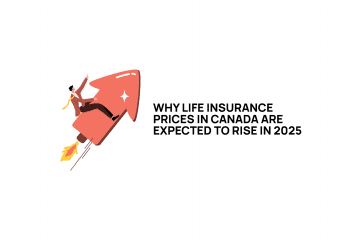Using life insurance as an asset class offers you two benefits. First, insurance policies have some tax-sheltering advantages (important with larger investment portfolios) and secondly you can diversify both by participating in the general returns of some insurance company portfolios, as well as taking advantage of insurance pricing considerations.
Summary
The basic concept is straightforward. You simply purchase a life insurance policy. Upon your death, your return is realized/returned by way of the death benefit.
Suitability
This strategy is only suitable for those seeking secondary investment strategies. It is not suitable for use as a primary investment strategy. Typical recommendation would be that you may consider investing 10-20% of your investable assets in this strategy.
Returns are not realized until your death. Thus this strategy is only for those with capital that they will not need during their lifetime.
This would be a suitable strategy for someone seeking diversification and guarantees, with total investable assets in excess of $5,000,000 seeking to diversify 10-20% of their portfolio.
Life Insurance as an Asset Class strategy and Why It Works.
The strategy consists of the purchase of a ‘quick-pay’ permanent life insurance policy. Premiums are injected into the policy as quickly as allowed by government insurance guidelines (commonly in 10 years or less). The policy is then maintained until death, at which point a named beneficiary receives the insurance proceeds.
Life insurance policies have a number of advantages over other investments. First, some policies have a discrete investment component. This investment component can be tax-sheltered during the growth period. It is then paid out tax free upon death. Secondly, insurance pricing takes into account the fact that some people cancel their policy. This allows insurance companies to reduce premiums compared to the final death benefit. Simplistically, it’s not your premiums accumulating to your death benefit, it’s 10 people’s premiums accumulating to 7 death benefits (assuming 3 people cancel before they pass away). These two advantages can make the final rate of return on a life insurance policy very attractive.
Considerations
When investigating this tax strategy, you should investigate the following:
- You will need to compare two types of life insurance policies; whole life insurance and universal life insurance.
- Within those two types of polices, you will need to consider whether you want a policy that is guaranteed, or not.
- Once a policy type is selected, you need to find the lowest possible premium, shopping the market using an independent broker
- Your broker must then minimize commissions to ensure the greatest possible returns in your policy.
Once selected, commonly a comparison is done showing after tax rates of return with varying ages of death. You can additionally (this is not normally done) do a mortality weighted rate of return where you get an ‘average’ rate of return by factoring in probability at death. However I feel this adds little to the decision, as it requires reliance on mortality tables as well as an understanding of variance.
Life Insurance as An Asset Class Example
Assuming a Male age 65 Nonsmoker, $200,000 single deposit with Canada Life as of Dec 2015. Commissions have been minimized to the maximum allowed by the life insurance company.
| Age | Deposit | Death Benefit | After Tax ROR | Pre-Tax ROR |
| 65 | 200000 | 539935 | 169.97% | 242.81% |
| 66 | 520486 | 61.32% | 87.60% | |
| 67 | 500772 | 35.79% | 51.13% | |
| 68 | 481761 | 24.58% | 35.12% | |
| 69 | 462553 | 18.26% | 26.08% | |
| 70 | 442717 | 14.16% | 20.23% | |
| 71 | 422438 | 11.27% | 16.10% | |
| 72 | 401829 | 9.11% | 13.02% | |
| 73 | 380884 | 7.42% | 10.60% | |
| 74 | 359660 | 6.04% | 8.63% | |
| 75 | 359674 | 5.48% | 7.83% | |
| 76 | 359688 | 5.01% | 7.16% | |
| 77 | 359703 | 4.62% | 6.60% | |
| 78 | 359718 | 4.28% | 6.12% | |
| 79 | 359733 | 3.99% | 5.70% | |
| 80 | 379749 | 4.09% | 5.84% | |
| 81 | 359814 | 3.51% | 5.02% | |
| 82 | 359831 | 3.32% | 4.74% | |
| 83 | 359848 | 3.14% | 4.49% | |
| 84 | 359866 | 2.98% | 4.26% | |
| 85 | 359885 | 2.84% | 4.05% | |
| 86 | 359906 | 2.71% | 3.87% | |
| 87 | 359929 | 2.59% | 3.70% | |
| 88 | 359952 | 2.48% | 3.54% | |
| 89 | 359976 | 2.38% | 3.40% | |
| 90 | 360000 | 2.29% | 3.27% |
Note: Pre-tax ROR is the Pre-Tax Rate of Return assuming a 30% tax rate. Year 21 is the average Life Expectancy.
You can see from the above, that the pre-tax rates of return can be fairly attractive. Assuming a life expectancy of 21 years, comparing a pre-tax rate of return of 4% compares very favourably with other guaranteed investment returns. For those looking for some diversity in their investment options with guarantees, taking advantage of a life insurance policy as an asset class can be an attractive option. If you would like more information on how to use life insurance as an asset class you can always reach out to one of our life insurance specialists.




